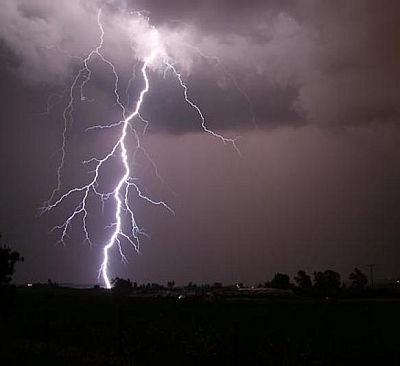Climate change causing more frequent and deadly lightning strikes: Scientists
July 13, 2024 17:43

Increased heating due to climate change is leading to more thunderstorm activity and consequently, more lightning strikes worldwide, senior scientists said on Saturday.
At least 43 people were killed due to lightning strikes in Uttar Pradesh on Thursday and 21 in Bihar on Friday.
Most of the people killed were either transplanting paddy in fields, grazing cattle or taking shelter under trees to protect themselves from the rain.
Former Secretary in the Union Ministry of Earth Sciences, Madhavan Nair Rajeevan, said climate change is increasing the formation of convective or thunderstorm clouds.
"People have documented that the frequency of thunderstorms is increasing everywhere, including India, due to climate change," he told PTI.
"Unfortunately, we do not have long-term data for lightning flashes to confirm an increase in incidents. However, we can conclude that global warming leads to more convective activity, resulting in more thunderstorms and, consequently, more lightning strikes," he said.
Rajeevan explained that lightning is attributed to deeper clouds with large vertical extensions.
"With climate change increasing the moisture-holding capacity of the air, more such clouds are forming," he added.
D S Pai, a senior scientist at the India Meteorological Department (IMD), said the higher the surface temperature, the lighter the air and the higher it will rise.
"So, with higher temperatures, there is a greater chance of convective activity or thunderstorms, which naturally leads to more lightning strikes. Climate change is making such events more frequent," he told PTI.
The senior meteorologist pointed out that the large number of lightning strikes in Bihar and Uttar Pradesh that claimed several lives last week were also due to large-scale thunderstorm activity.
Former IMD chief K J Ramesh explained that the vertical extent of clouds increases with more heating.
"Crystallisation occurs when the air temperature reaches the freezing point at the height of five to six kilometres. The deeper the cloud, the more ice crystals and charge it contains," he said.





 © 2024 Rediff.com -
© 2024 Rediff.com -